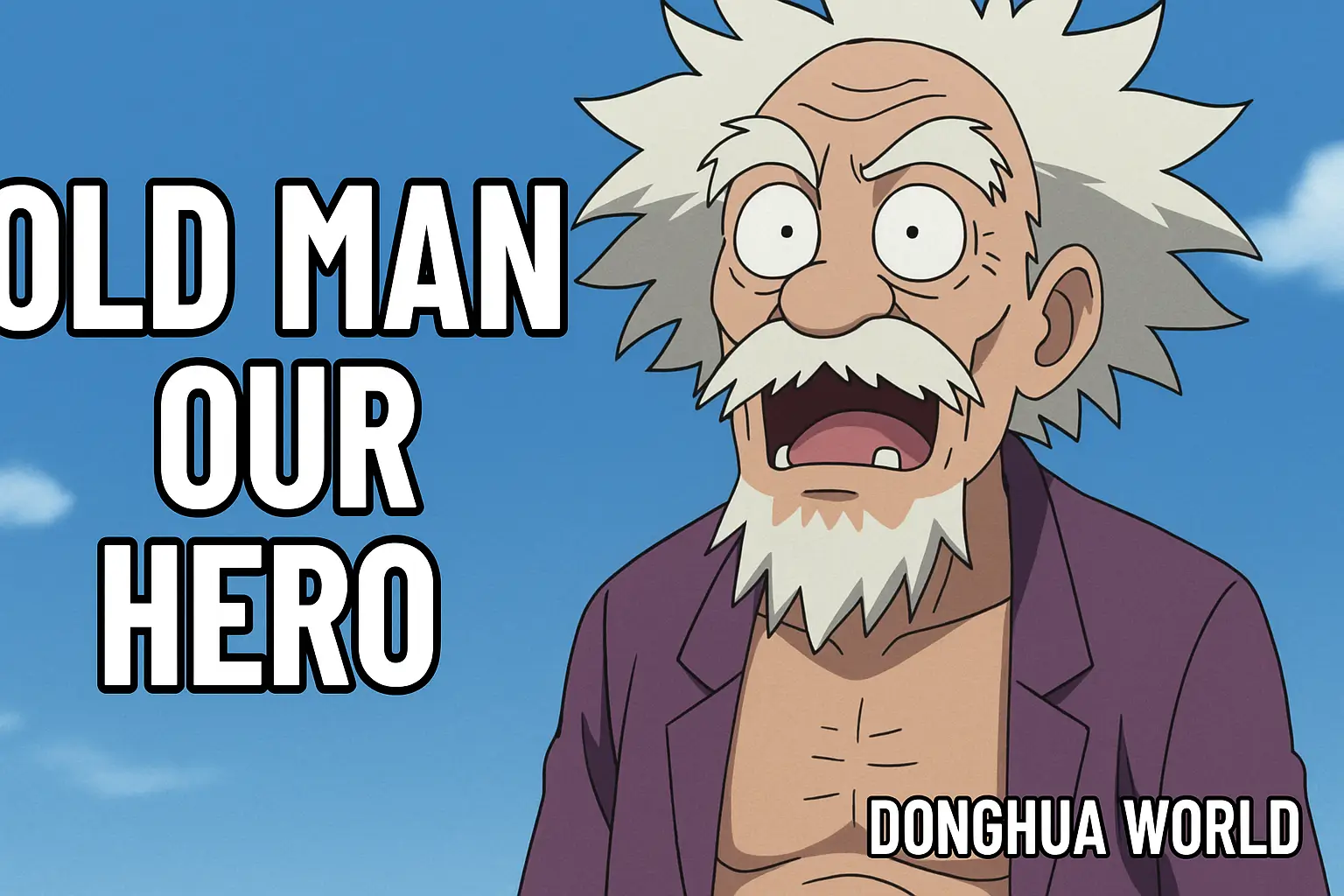Chinese animation, or donghua, has been gaining international attention for its artistic storytelling and unique character development. Among the most notable characters in recent donghua history is the Old Man, also known as Our Hero, from the animated series To Be Hero. Created by the collaborative efforts of Chinese and Japanese studios, this character represents a surprising fusion of satire, emotional depth, and heroism that resonates with audiences far beyond its comedic surface.
This article delves into the identity, role, transformation, and legacy of the Old Man character in To Be Hero, highlighting his significance within the narrative and his broader cultural impact.
Who Is the Old Man/Our Hero?
In the donghua To Be Hero, the protagonist is initially introduced as a nameless, middle-aged man working as a toilet seat designer. He is known for his arrogance and womanizing behavior. However, his life takes a sudden turn when he is sucked into a parallel universe and transformed into an overweight, unattractive version of himself—thus beginning his journey as Our Hero.
This ironic transformation sets the tone for the series. The Old Man is no longer the suave figure he once was, instead, he becomes a reluctant, flawed superhero with a deep personal mission: to protect his daughter, Min-chan, from unseen threats in a strange world.
The Transformation: A Hero Born from Humility
The physical transformation from an attractive man to an old, obese hero is more than a visual gag. It symbolizes a deeper internal change. In a quote from the series’ lead writer, “The uglier he becomes, the closer he gets to his true self.” This statement reflects the theme of redemption and the idea that true heroism comes from selflessness and emotional maturity.
As Our Hero, the Old Man must let go of his past vanity and accept responsibility. He embodies the reluctant hero archetype, a concept popularized in Joseph Campbell’s monomyth structure. While he initially resists his new role, the threats to his daughter force him to confront his shortcomings and rise above them.
Character Development Through Fatherhood
One of the most poignant aspects of the Old Man’s character arc is his relationship with his daughter. In the beginning, he is a distant and irresponsible father. His transformation provides him with an opportunity to reconnect with Min-chan and make amends.
The series takes a surprisingly emotional turn as it explores themes of parental sacrifice and unconditional love. As he navigates the bizarre world he’s thrown into, his primary motivation is always the safety and happiness of his daughter. This elevates the narrative from a simple parody of superhero tropes to a moving tale of redemption and fatherly devotion.
According to a cultural analyst from China Daily, “To Be Hero uses absurdity to peel back layers of emotional truth. The father-daughter dynamic is its emotional anchor.”
Humor and Satire as Narrative Tools
Despite its emotional depth, To Be Hero is also known for its slapstick humor and satirical take on conventional superhero narratives. The Old Man’s grotesque appearance and awkward situations serve as both comedic relief and metaphor for the internal struggles he faces.
This duality is a testament to the show’s writing. The Old Man/Our Hero oscillates between being a figure of ridicule and one of profound empathy. It’s this balance that makes his character so memorable.
Satire in To Be Hero also functions as a critique of modern masculinity and societal expectations. The Old Man’s past reliance on charm and good looks is contrasted sharply with his present form, which demands authenticity and courage.
A Cross-Cultural Production with Global Appeal
To Be Hero was developed as a collaboration between the Chinese company Haoliners Animation League and the Japanese studio Studio LAN. This unique production strategy allowed the series to blend Eastern storytelling with Western influences.
The Old Man’s character serves as a perfect embodiment of this cultural synthesis. He reflects the Chinese value of filial piety—respect and devotion to one’s family—while also embracing the Western narrative trope of personal redemption through hardship.
Voice actor Kenjiro Tsuda, who provided the Japanese voice for the Old Man, once commented in an interview, “He may look ridiculous, but there’s something deeply human in the way he tries, fails, and tries again.”
Legacy and Reception
Since its release, To Be Hero has garnered a strong cult following, with particular praise for its unexpected emotional depth. The Old Man has been widely discussed in forums and fan communities, often cited as a “hidden gem” in animation.
Critics have noted the show’s ability to blend genres—comedy, action, science fiction, and drama—while keeping the character of the Old Man at its emotional center. His journey from selfishness to selflessness encapsulates the human experience in a way few animated characters manage.
The success of the series led to a sequel, To Be Heroine, which further expands on the universe, although the Old Man takes a more peripheral role.
Conclusion: The Everyman as a Superhero
The Old Man/Our Hero in To Be Hero is not your typical animated protagonist. He is flawed, awkward, and often ridiculous. But beneath the comedic exterior lies a deeply human character whose journey touches on themes of love, loss, and redemption.
In a genre often dominated by perfect, invincible heroes, the Old Man stands out as a refreshingly real figure. His story reminds us that heroism isn’t about appearances or accolades—it’s about the willingness to change, to protect, and to love.
As the show subtly conveys, sometimes it takes becoming a grotesque version of yourself to discover the hero within.
